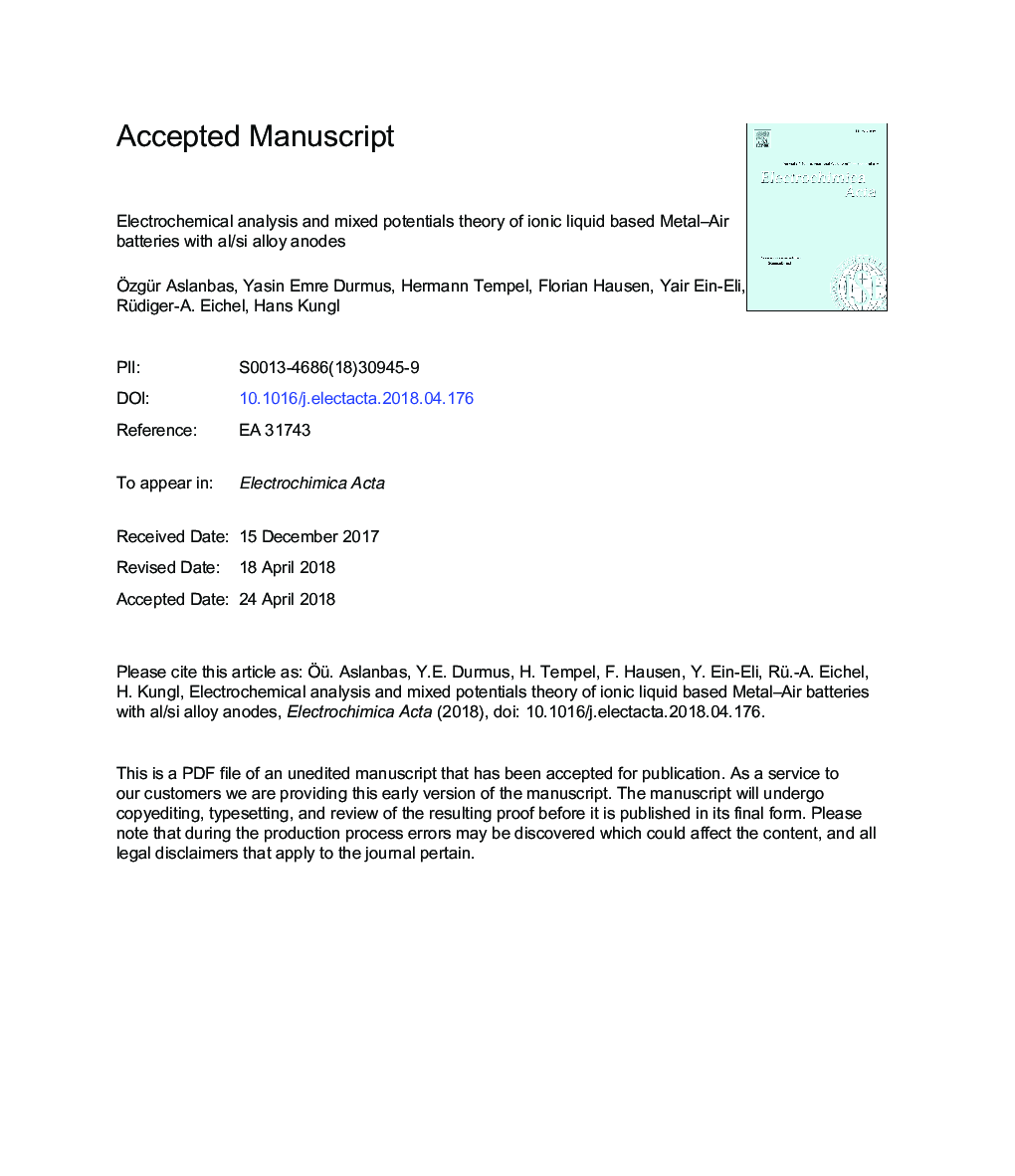| Article ID | Journal | Published Year | Pages | File Type |
|---|---|---|---|---|
| 6602875 | Electrochimica Acta | 2018 | 47 Pages |
Abstract
Aluminium and silicon, when coupled with an air cathode in an electrochemical cell may provide theoretical specific energies of up to 8146â¯mWh/g and 8470â¯mWh/g. Proof of concept for the discharge in cells with ionic liquid EMIm(HF)2.3F electrolyte had been established in 2009 for silicon and in 2015 for aluminium. The objective of the present work is the investigation of discharge behavior and corrosion in this type of cell using binary Al/Si alloys as anodes. Al/Si alloys with nine different compositions were prepared by an arc melting process and shaped to anodes. Microstructure of the anodes in the initial state was evaluated with respect to the fractions of its constituents. Al/Si-air primary full cells were investigated with respect to voltages during OCV and discharge during intermediate term (20â¯h) runs under current densities of 250â¯Î¼A/cm2. Voltages decrease with Si-content in the alloys following trends with quantitatively different characteristics for the hypoeutectic, intermediate hypereutectic and the alloys with high Si content. SEM analysis of surface morphology of the anodes after discharge experiments indicates that for all alloys the discharge capacity results mostly from the oxidation of the aluminium. Potentiodynamic polarization measurements were conducted in order to determine corrosion potentials for the alloys and analyzed with approaches based on mixed potential theory including galvanic coupling. The results are discussed in terms of Evans diagrams; thereby approaches based on alternative scenarios for the galvanic coupling are examined.
Related Topics
Physical Sciences and Engineering
Chemical Engineering
Chemical Engineering (General)
Authors
Ãzgür Aslanbas, Yasin Emre Durmus, Hermann Tempel, Florian Hausen, Yair Ein-Eli, Rüdiger-A. Eichel, Hans Kungl,
